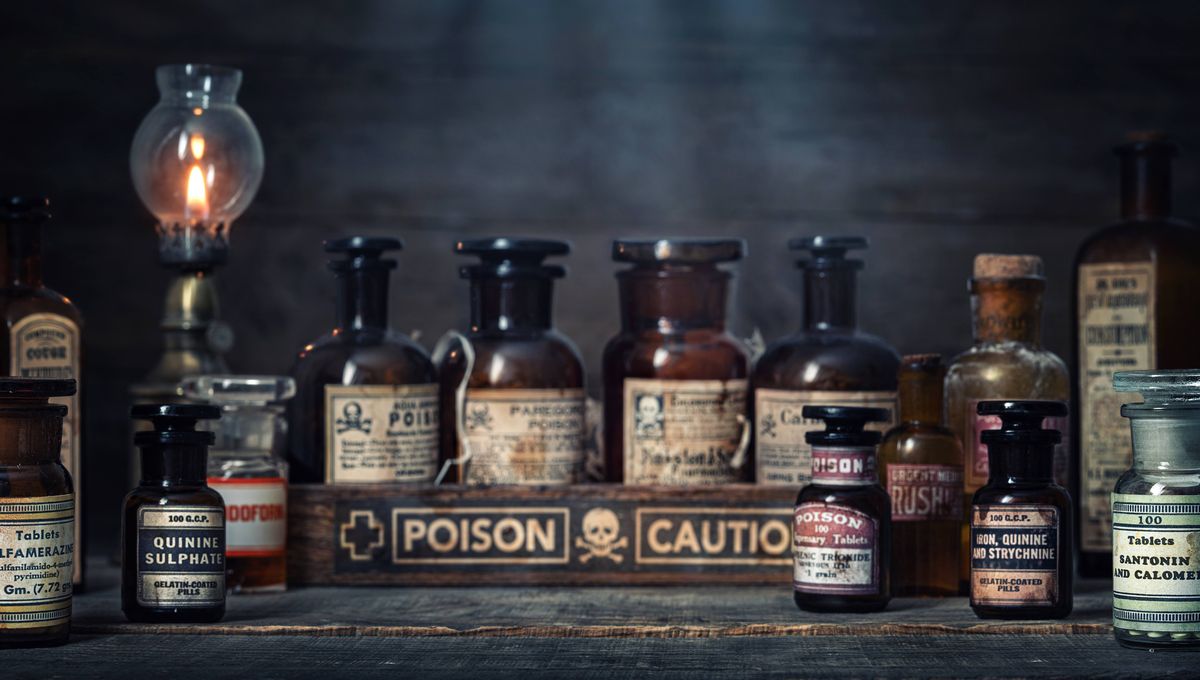
Today, the idea of microdosing potent substances such as LSD or other psychedelics has become increasingly popular in parts of the world. At present, the medical community is unsure whether microdosing psychedelics is actually beneficial, but this is not the first time people have taken small quantities of a substance for assumed health benefits. During the 19th century, some people started microdosing something altogether more dangerous – arsenic.
The arsenic eaters of Styria
In 1851, the medical community was introduced to a strange practice among the peasants of Styria, in Austria. According to Johann Jakob von Tschudi, a Swiss naturalist and physician, there were people in Austria who had the habit of eating arsenic.
Tschudi had first encountered this supposed phenomenon while traveling in the region during the 1830s where he heard about a recent trial involving a potential poisoning. In the trial, questions were raised as to whether the victim had been murdered with arsenic or was a so-called “toxicophagus”, essentially someone who willingly took small doses of arsenic in the belief that it improved their health and overall complexion.
It seemed that some people in Styria had been eating small amounts of arsenic since around the 16th century. At first, so the story goes, they would consume a tiny amount – less than half a grain – a few times a week, and then gradually increase the dosage as they apparently gained tolerance.
Although Tschudi reported that the arsenic eaters he encountered were free from signs of chronic poisoning, he added that the number of deaths from abuse or irresponsibility were pretty high.
Tschudi’s story spread across the world and, although it had its detractors and doubters, there were many doctors, scientists and members of the public who took a new interest in arsenic for its supposed health benefits.
The potentially deadly power of this substance had been well-known for centuries, but it was already being used in some medicines and commercial products at the time. The case of the Styrian arsenic eaters simply added a sheen of “credibility” to existing beliefs, and soon arsenic was being peddled as a health supplement by doctors and quacks alike.
Arsenic on trial
The enthusiasm for microdosing in today’s society stems from the growing body of literature that sees potential for some psychedelics, such as psilocybin, the psychoactive compound in “magic mushrooms”, to help treat severe depression and anxiety. The current research is still not clear on whether microdosing has the benefits proponents claim – such as improving mood, concentration, creativity, and productivity without the accompanying hallucinations – or whether any apparent benefits are the result of an “expectancy effect”.
But one thing is certainly clear: there are no benefits to microdosing arsenic.
Arsenic is extremely dangerous. Inorganic arsenic is not only a confirmed carcinogen but is also among the most significant chemical contaminants in drinking water globally. Although organic arsenic is less harmful, it is still highly toxic in sufficient quantities and through prolonged exposure. Not to mention, it was a convenient and readily available poison for any would-be murderers.
This latter point was one of the factors that led to the end of the arsenic eating era. In suspected murder trials involving arsenic poisoning, it was not unusual for the accused to offer the “Styrian defence”, whereby the victim was presented as an arsenic eater who happened to overdose.
From the moment Tschudi’s report started circulating among medical practitioners, there were skeptics who doubted such claims. For one thing, it was difficult to verify whether the Styrian arsenic eaters were actually consuming arsenic or eating something innocuous, like chalk. Although many doctors did find evidence that some individuals were capable of consuming arsenic that would otherwise kill a person, they also believed many supposed arsenic eaters were fakes.
Ultimately, by the 20th century, the popular enthusiasm for arsenic was in decline. It became increasingly difficult for even the strongest supporters of the substance to ignore the number of deaths caused by arsenic poisoning, accidental or otherwise. Equally, the emergence of pharmacology as a distinct, independent field led more scientists to examine arsenic and its potential for abuse, as well as its legitimate uses (arsenic is still used in some medical treatments today, such as in chemotherapy for acute leukemia).
On the subject of tolerance to arsenic, there is evidence that some people have a greater tolerance for it than others, but this is not caused by microdosing during a single lifetime. In some parts of the world, such as in the Camarones Valley in Chile, some people have developed a genetic mutation that offers resistance to arsenic, maybe as a result of high exposure to the substance over multiple generations.
Whatever the reason is for this adaptation, it demonstrates how humans can evolve to live in toxic environments, though toxic health fads are a different matter. The jury is still out on the potential benefits of microdosing psychedelics, but at least there is strong evidence that these substances can have benefits for mental health. Less can be said about the history of arsenic.
Source Link: The People Who Thought Microdosing Arsenic Was A Good Idea Were Very, Very Wrong